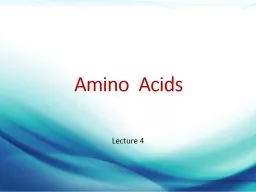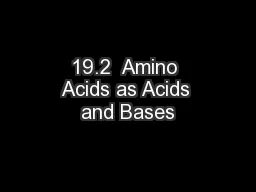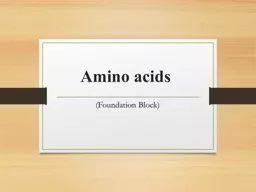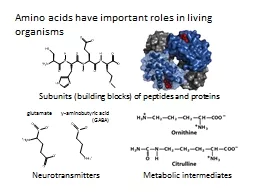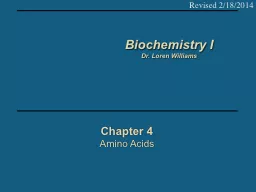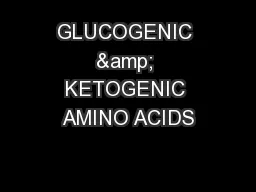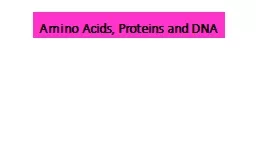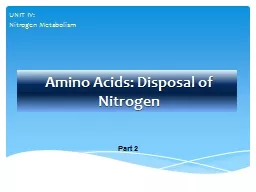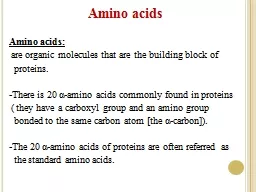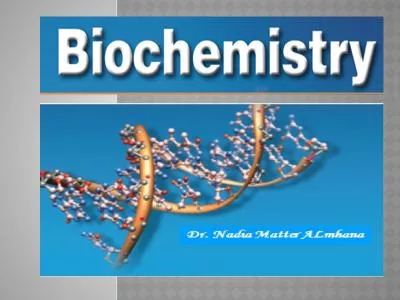PPT-Amino Acids Lecture 4 Introduction
Author : gelbero | Published Date : 2022-06-28
Amino acids play central roles both as building blocks of proteins and as intermediates in metabolism The 20 amino acids that are found within proteins convey a
Presentation Embed Code
Download Presentation
Download Presentation The PPT/PDF document "Amino Acids Lecture 4 Introduction" is the property of its rightful owner. Permission is granted to download and print the materials on this website for personal, non-commercial use only, and to display it on your personal computer provided you do not modify the materials and that you retain all copyright notices contained in the materials. By downloading content from our website, you accept the terms of this agreement.
Amino Acids Lecture 4 Introduction: Transcript
Download Rules Of Document
"Amino Acids Lecture 4 Introduction"The content belongs to its owner. You may download and print it for personal use, without modification, and keep all copyright notices. By downloading, you agree to these terms.
Related Documents

